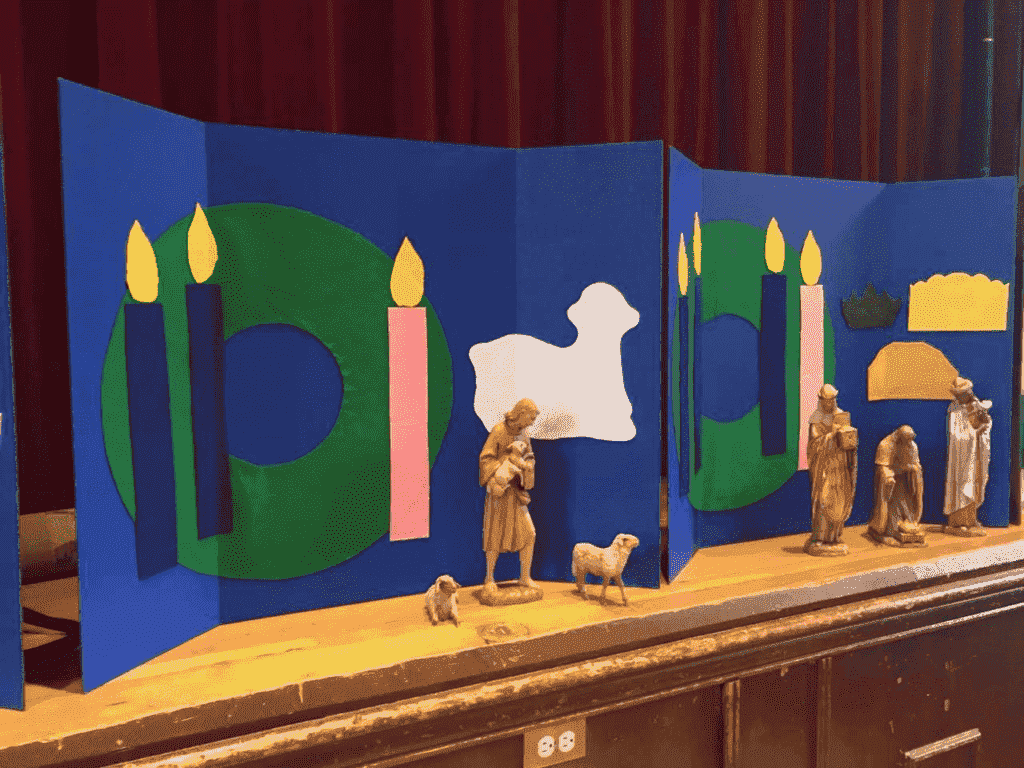Sometimes those rich, beautiful stories are just begging to burst out of the classroom and into another context that might not allow for the entire process.
The Godly Plaly classroom has a rhythm that forms and shapes participants. Godly Play teachers are trained to trust the process of the entire liturgy from the first greeting to the final blessing.
And yet, sometimes those rich, beautiful stories are just begging to burst out of the classroom and into another context that might not allow for the entire process. With the help of the other Godly Play Missioners, I put together this list of some of the ways we have taken Godly Play stories out of the classroom and integrated them into other parts of congregational life.
Godly Play at Vacation Bible School or Church Camp
Camp and Vacation Bible School are often a great places to try something new and BIG! Involving the children in the creation of the materials and the telling of the story provides meaningful work throughout the week. A few of our favorite stories to tell BIG at VBS include:
- Creation– making the materials is relatively simple using poster board and paint or felt. The materials can be attached to a pole for better visibility.
- Pentecost– younger children love building and knocking down a huge tower, which can easily be made out of cardboard boxes covered with butcher paper, and older children can do research on the disciples and create their shields on poster board.
- The Mystery of Christmas– Volume 3 contains step by step directions on how to make this story for your classroom, and it is easy enough to enlarge the images to share with a bigger group. Our “Christmas in July” VBS was one of my all time favorites because we got to spend quality time with stories that we sometimes miss in the hectic pace of the actual season.

Godly Play In Worship
Sharing a story as part of Sunday morning worship is a great way to let the whole congregation hear the powerful language of these stories we are telling our children. Some congregations use a story to replace one of the lessons while others use a story in the place of a sermon. The materials used run the gamut from beautifully constructed and painted “pieces” to simple costuming of a few people who move as the story is told. It is important to maintain the consistency of materials as they related to different genres of stories, so sacred stories are perfect for having people move big pieces or themselves as the story is told while parables, which are stories about stories, should be told using flat pieces—a large felt board works well. Here are some ideas on how to deal with “wondering” during worship:
- Invite the congregation to write down their responses to the wondering questions and include them in the offering baskets.
- Invite discussion of the wondering questions with those sitting near each other rather than with the whole group.
- Facilitate wondering “as usual” if it works in your context, being careful not to put children on display or set them up for the adults to laugh at their answers.
Godly Play During Seasonal Events
Depending on the number of people involved, you may not need to enlarge your materials to share stories with adults and children together during yearly events. If visibility is an issue, one approach is to use a camera connected to a projector and use the regular materials, filming and projecting the storyteller’s hands. If your group will be large but gathered in a circle, creating pieces that are bigger than normal but not so big that the storyteller can’t manipulate them alone also works. Here are a few ideas for intergenerational events that include story sharing:
- Incorporate stories into special family services. The Mystery of Easter works well for Ash Wednesday, The Synagogue and the Upper Room or the Jerusalem story are nice for Maundy Thursday, and The Faces of Easter can be used on Good Friday.
- Use the Baptism story as part of the baptism preparation process.
- Tell the Advent story to kick off an advent wreath-making event.
- Celebrate St. Nicholas Day (December 6) with dinner, the St. Nicholas story, and a visit from St. Nicholas himself!
Editor’s Note: As always, when choosing a curriculum for your setting, take into account the theology, Biblical interpretation, context, materials, and representation. Read more about choosing a curriculum at Choosing a New Curriculum: Read this First.

We are going to do a Christmas in July and use Godly Play stories- the article mentioned that the author did this at her church. Is there a way to connect with the author? I would love to get feedback and ideas about how she went about doing this.
Thanks so much.
Mary Hunter Maxwell is a Godly Play trainer and her contact info can be found on the GP Website which is godlyplayfoundation.org. Go to the training tab and then scroll alphabetically for Mary Hunter. Happy Christmas in July!